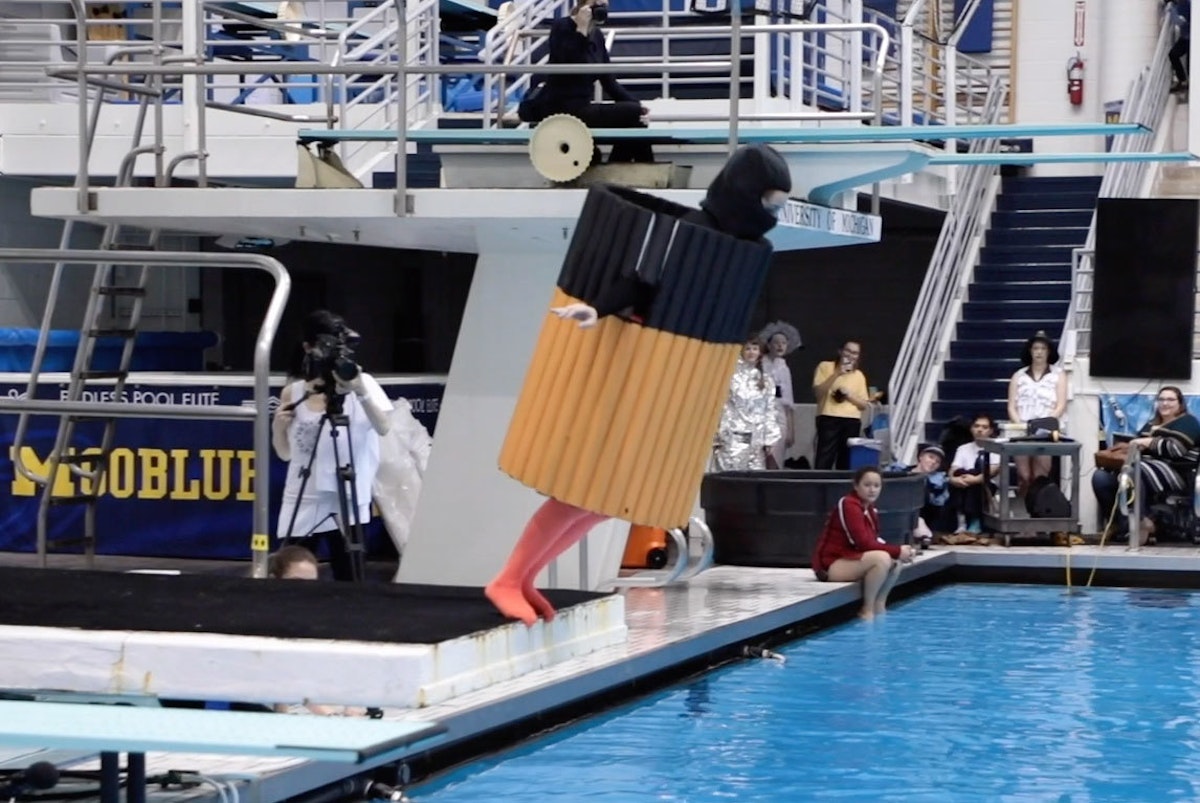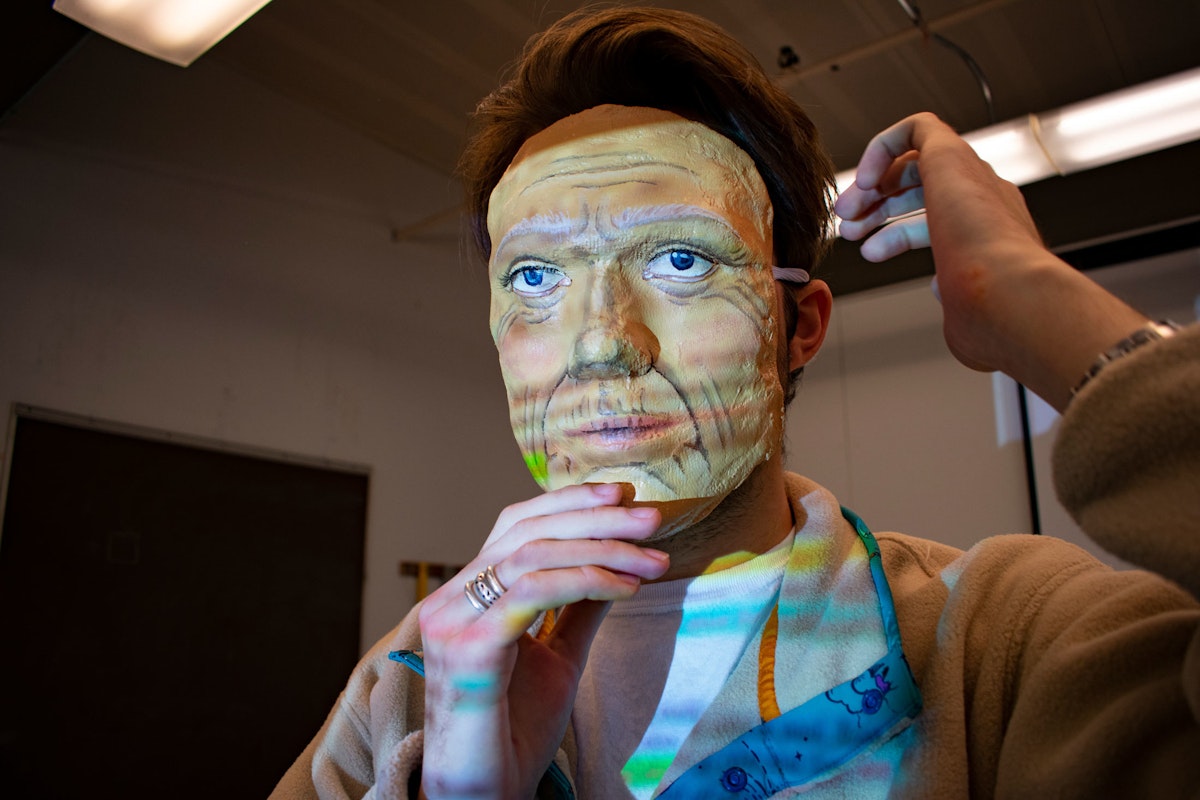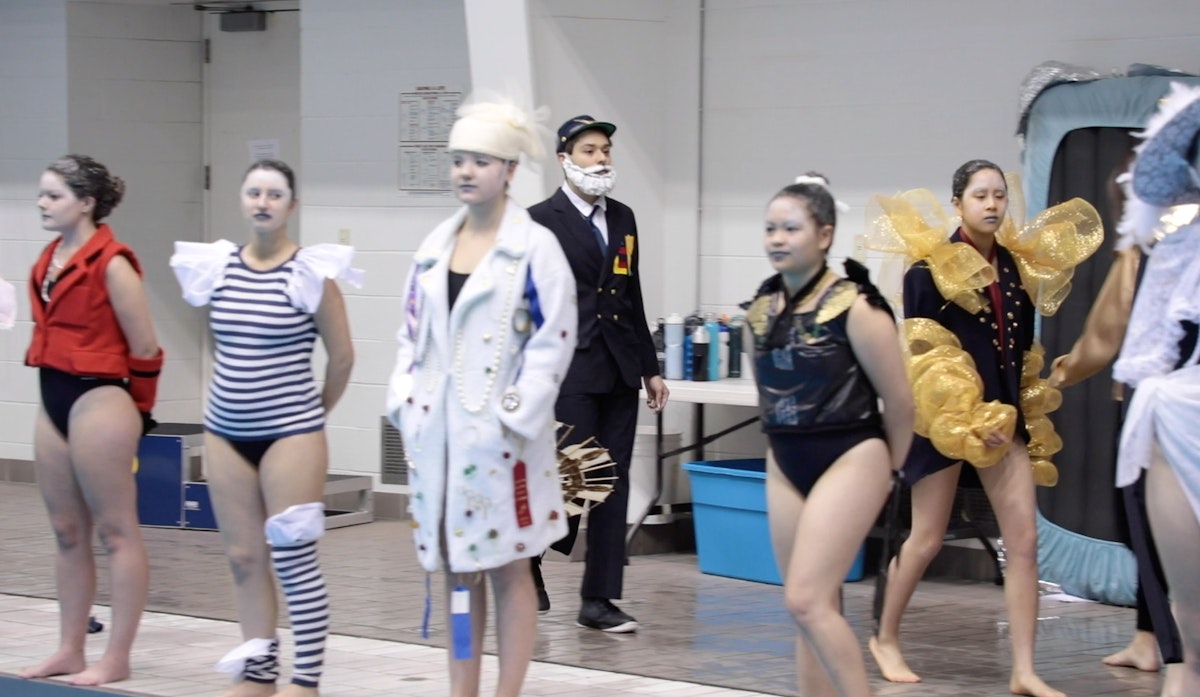Rebekah Modrak, Claudia Bitran, and the Sinking of the Titanic
Hosted by Stamps professor Rebekah Modrak, Claudia Bitran was a Witt Visiting Artist at the Stamps School of Art and Design from October 21-24 during the Fall 2018 term. Together, Modrak and Bitran organized a recreation of scenes from director James Cameron’s Titanic at U-M’s Canham Natatorium.
Since 2014, Bitran, who is Chilean-American, has been reinterpreting Titanic with an intentionally experimental shot-for-shot recreation with the intent of illuminating the ways that entertainment manipulates audience emotions and celebrating the power of low-budget, DIY collaboration. Her dynamic, long-term project has involved more than 500 participants from 15 cities across Chile and the U.S.
The shoot at the Canham Natatorium involved the U-M Synchronized Swimming Club and students in Dressing Up and Down, Modrak’s studio course at Stamps where students consider fashion and fantasy, adapt found clothing, manufacture and manipulate costumes, and construct anything from headgear to full-body transformations.
Modrak, whose personal creative practice includes challenging unethical aspects of consumer culture, found Bitran’s approach to be refreshing.
“Bitran’s version of the film shifts the story from a traditionally male perspective to a female perspective,” Modrak said. “This project challenges the idea that bigger budgets are better and calls for an appreciation of using humble, ordinary materials with humor and creativity.”
Stamps student Rachel Slakter (BFA ‘20), who played the ship’s falling smokestack in Bitran’s film, discussed the use of humble materials with enthusiasm. “I definitely acquired new knowledge about construction, material composition, and got familiar working with materials once obscure to me like caulking, metal pipe insulation, recycled plastics, and even an old doll and an air mattress.”

Modrak first met Bitran on a studio visit to SmackMellon, an artist residency program in NYC during a 2017 MFA Professional Practice trip. She was struck by Bitran’s use of self-imposed limitations or “obstructions,” working with available and low-budget materials or having to re-create a pop culture work that had originally been produced with a large budget and high tech methods.
“Obstructions are meant to challenge or provoke an artist into making mistakes and veering off course,” Modrak said. “Making these mistakes opens up opportunities for extraordinary and inventive discoveries that would be impossible if we stayed within our normal repetitive circuits of action and thought.”
For Stamps student Mac MacVaugh (BA ‘20), who played a row boat/search captain and “old Rose” in the film, the “mistakes” of the project turned out to be some of the richest learning moments. “If mistakes were made or something turned out different than expected, we were told just to go with it and work with those mistakes,” MacVaugh said. “Usually I'm very planned out and precise when it comes to making my art, no matter what the medium is, so this was kind of liberating to be apart of.”

Stamps student Gillian Yerington (BFA and BBA ‘20), who played the Titanic ship itself in the film, also appreciated Bitran’s approach. “It really allowed me to create with a lot of freedom,” she said. “I enjoyed getting to try to make art in another artist's style while maintaining my own practice. I feel like it pushed me to create in new ways.”
Over the years, Modrak has brought an impressive and diverse group of artists for students in Dressing Up and Down to work with, including Brian Bress, Andrea Loefke, Mary Lum, and Pierre Gour. As the Sophomore Studios coursework at Stamps uses obstructions as creative prompts, Modrak saw mutual benefit in Bitran’s visit.
“I invited Claudia to be the visiting artist this year because she could deepen and develop students' understanding of the potential of obstructions, because of shared interests in pop culture, and to build on the course’s spirit of celebrating low-tech and resourceful approaches,” she said.

“I think the largest obstruction was the minimal budget.” Slakter said. “We had to make large scale costumes that had to be semi durable, water resistant, and buoyant so that was a huge factor in the material and construction decisions we had to make that we may have not made otherwise.”
Yerington agreed, adding: “Claudia's energy was so contagious. It was so great to work with her. I want to be like that when I collaborate with other people.”
